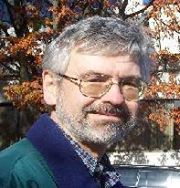Stephen has been working on DES since the beginning of the project. Early on he worked on evaluating various optical designs for the corrector and their impact on science requirements. He was present at “first light” for the Dark Energy Camera and helped with the commissioning. Stephen is also the author of “kentools”, a program for displaying images and evaluating their quality. Currently he is a member of the weak lensing working group, which works on one of the four probes for Dark Energy.
We asked Stephen a few more questions – here’s what he had to say:
What is your favorite part about being a scientist?
You are always learning new things – be it new discoveries about the universe, new ways to build instrumentation, or even new ways to work with people to make projects happen.
When did you know you wanted to be a scientist?
I was always interested in science and astronomy, so it wasn’t even a choice – it just happened.
Do you have any hobbies or play any sports?
I enjoy hiking and mountain climbing, which is a bit of a challenge when you live in Illinois.
What is your favorite space-related image, and why?
I have taken many pictures of the Andromeda Galaxy using everything from a small camera lens up to some of the largest telescopes in the world. One image I made actually showed up on Google Sky, and I think it is still in there.
What do you think has been the most exciting advance in physics / astronomy in the last 10 years?
For me it is being amazed at how our knowledge of the size and content of the universe has become much more precise than it was in the past.
Thinking back to when you were an undergrad in physics (if applicable), was there anything you were taught then that is not taught now?
I remember seeing artists’ conceptions and reading science fiction stories about what the surface of Mars would be like, but once the first Mariner spacecraft obtained pictures, everyone was embarrassed because no one had predicted that it would have craters.
